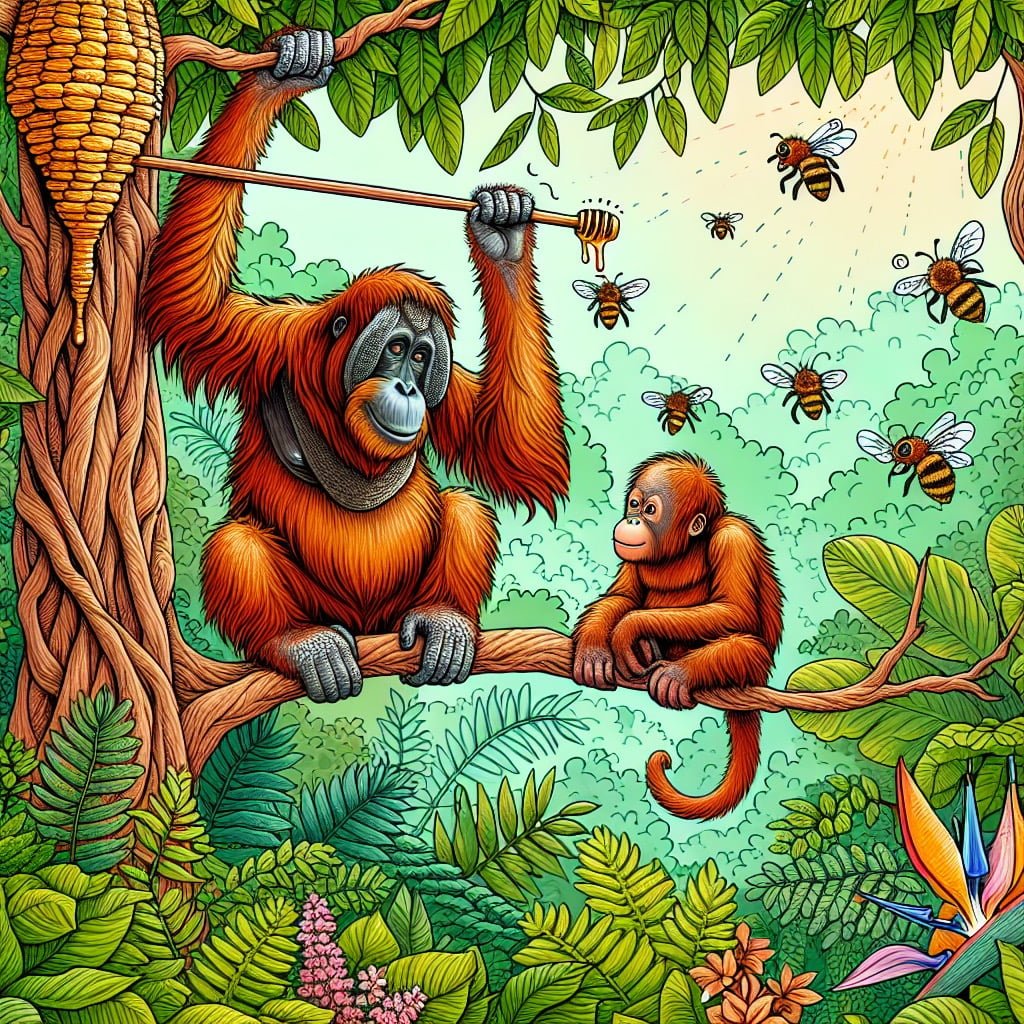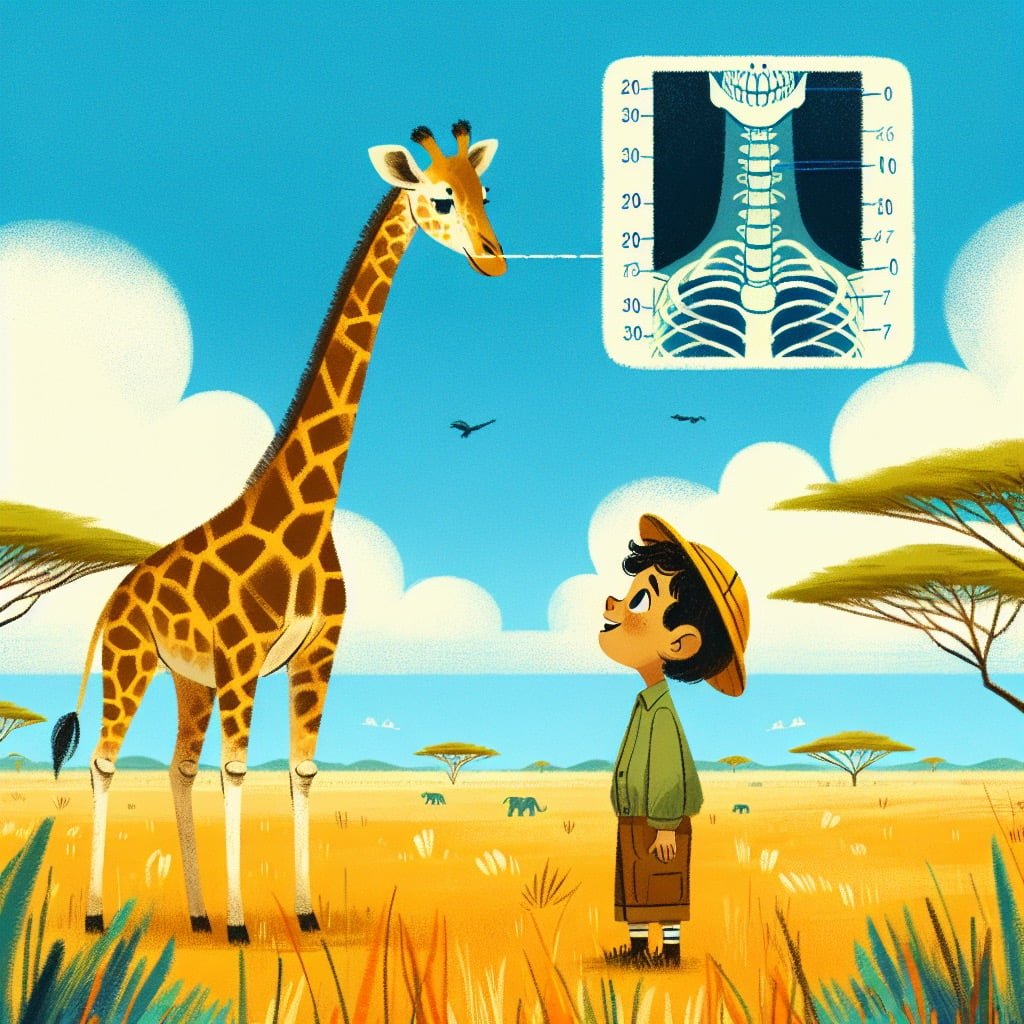Welcome to a world of fascinating facts about mammals for kids! As an expert in the field, you’re about to embark on an exciting journey delving into the incredible abilities and behaviors of some of the coolest mammals on our planet. From dolphins using echolocation to navigate in the depths of the ocean to kangaroos leaping up to 30 feet in a single bound, each fact will captivate young minds and ignite a sense of wonder and curiosity about the natural world. Join us as we explore the unique traits of elephants with exceptional memory, orangutans as expert tool users, and sloths as surprisingly proficient swimmers. Get ready to discover the amazing diversity and resilience of these remarkable creatures that call Earth their home. Let’s dive in and uncover the fun facts about cool mammals that will leave kids inspired and eager to learn more!
Facts About Mammals For Kids
1. Dolphins Use Echolocation to Navigate

For younger kids: Dolphins make a special sound that bounces off things and tells them where they are.
For older kids: Dolphins produce clicking sounds that travel through the water, bouncing off objects, and returning to the dolphin to help them navigate and locate prey using echolocation.
Detailed explanation:Dolphins, like many other marine mammals, use echolocation to navigate their underwater surroundings. This fascinating ability allows them to “see” by emitting high-frequency sounds and listening for the echoes that bounce back off objects in their environment. By interpreting these echoes, dolphins can determine the size, shape, distance, and even the material composition of objects around them.
Echolocation is an important adaptation for dolphins, as it helps them navigate through murky or dark waters where visibility is limited. It also aids in hunting, as dolphins use this ability to locate and catch prey efficiently. In fact, some species of dolphins have been known to work together in coordinated groups to herd fish into a tight ball using echolocation, making it easier for them to catch their meal.
For kids who are fascinated by marine mammals, learning about echolocation in dolphins can be an exciting way to understand how these intelligent animals interact with their environment. By understanding how echolocation works, children can appreciate the unique adaptations that dolphins have developed to survive and thrive in their ocean habitats. Encouraging kids to explore more facts about mammals, such as how different species have evolved to suit their specific environments, can spark a lifelong interest in marine biology and conservation.
Overall, the fact that dolphins use echolocation to navigate is just one of many fascinating Facts About Mammals For Kids to discover and explore.
Facts About Mammals For Kids
2. Elephants Have the Best Memory in the Animal Kingdom

For younger kids: Elephants never forget anything, like where they found water or where their family is.
For older kids: Elephants have an exceptional memory and can remember locations of water sources, foraging grounds, and other essential resources, as well as recognize other elephants even after years of separation.
Detailed explanation:Elephants are known to have the best memory in the animal kingdom. This remarkable ability to remember events, locations, and other elephants is a crucial part of their social structure and survival. One of the main reasons elephants have such incredible memories is due to the size and complexity of their brains. In fact, elephants have the largest brains of any land animal, weighing as much as 11 pounds!
One of the most fascinating facts about elephants’ memory is their ability to remember other individuals from their past. They can recognize elephants they haven’t seen in decades, remember past interactions with them, and even hold grudges against specific elephants. This long-term memory helps elephants navigate their complex social hierarchies and maintain relationships within their herds.
Another impressive aspect of elephants’ memory is their spatial memory. Elephants possess a keen sense of direction and can remember long-forgotten watering holes or migration routes. This ability allows them to navigate vast distances in search of food and resources, even in harsh and changing environments.
Research has shown that elephants’ exceptional memory is linked to the development of their hippocampus, a region of the brain associated with memory and spatial awareness. This is why elephants excel in tasks that require memory and learning, making them one of the most intelligent and adaptable mammals in the animal kingdom.
In conclusion, elephants’ incredible memory and cognitive abilities are essential to their survival and social interactions. By understanding these fascinating facts about mammals, especially elephants, kids can gain a greater appreciation for the unique abilities and behaviors of these majestic creatures.
Facts About Mammals For Kids
3. Orangutans Are Expert Tool Users

For younger kids: Orangutans are really smart and use sticks and leaves to get food.
For older kids: Orangutans are known for their advanced tool-making skills, using sticks to extract insects from tree crevices and leaves for protection against rain.
Detailed explanation:Orangutans, which are large apes native to the rainforests of Indonesia and Malaysia, are known for being expert tool users. This ability sets them apart from many other mammals and showcases their incredible intelligence and adaptability. Orangutans have been observed using a variety of tools in the wild, such as sticks to extract insects from crevices, leaves to fan themselves, and even makeshift umbrellas to shield themselves from the rain.
One famous example of orangutan tool use is their use of “leaf gloves” to protect their hands while handling spiky fruits. They will carefully fold a leaf over their hand to create a protective barrier, allowing them to safely manipulate the food without getting pricked by the thorns. This behavior demonstrates the orangutan’s problem-solving skills and ability to innovate in order to meet their needs.
Another fascinating aspect of orangutan tool use is their ability to create and modify tools for different tasks. For example, they have been observed breaking off branches and stripping them of leaves to make a “swatter” for brushing away insects. This shows not only their ability to use tools, but also their understanding of cause and effect and their ability to plan and execute complex tasks.
Overall, the fact that orangutans are expert tool users provides valuable insights into the cognitive abilities of these amazing primates. By studying their behavior, we can gain a better understanding of the intelligence and adaptability of orangutans, as well as the evolutionary processes that have shaped these fascinating creatures. By sharing these Facts About Mammals For Kids, we can inspire the next generation of scientists and conservationists to appreciate and protect these incredible animals and their habitats.
Facts About Mammals For Kids
4. Polar Bears Have Black Skin Under Their White Fur

For younger kids: Underneath their fur, polar bears have black skin which helps keep them warm in the cold Arctic.
For older kids: The black skin of polar bears absorbs the sun’s heat more effectively, while the white fur helps them blend into their snowy environment, making them well-adapted for survival in the Arctic.
Detailed explanation:Polar bears are one of the most iconic animals of the Arctic, known for their thick white fur that helps them blend in with the snow and ice. However, many people are surprised to learn that underneath all that white fur, polar bears actually have black skin.
This adaptation is crucial for the survival of polar bears in their icy environment. The black skin absorbs the heat from the sun, helping the bears stay warm in the freezing temperatures of the Arctic. In fact, studies have shown that the black skin of polar bears can absorb up to 97% of the sunlight that hits it.
This unique adaptation is just one of the many fascinating facts about mammals for kids to learn about. It showcases how animals have evolved over time to thrive in their specific habitats. By understanding these adaptations, children can gain a greater appreciation for the diversity of life on Earth and the ingenuity of nature.
So, the next time you see a polar bear at the zoo or in a documentary, remember that underneath all that fluffy white fur lies a layer of black skin that helps them survive in their icy home. It’s just one of the many amazing facts about mammals for kids to discover and marvel at.
Facts About Mammals For Kids
5. Cheetahs Are the Fastest Land Mammals

For younger kids: Cheetahs run really, really fast—faster than any other animal on land!
For older kids: Cheetahs can sprint at speeds of up to 70 miles per hour, making them the fastest land mammal and enabling them to swiftly catch their prey during hunts.
Detailed explanation:Cheetahs are often regarded as the fastest land mammals, capable of reaching speeds of up to 75 miles per hour in short bursts. These magnificent creatures have evolved over millions of years to become highly specialized sprinters, with adaptations such as long, slender bodies and powerful muscles that allow them to achieve such incredible speeds.
One of the most fascinating **Facts About Mammals For Kids** is that cheetahs have large nasal passages and lungs that enable them to take in large amounts of oxygen during their sprints, fueling their muscles and helping them maintain their impressive pace. Additionally, their flexible spine and oversized liver provide the necessary support and energy storage to sustain their rapid movements.
Cheetahs also have unique features on their paws called non-retractable claws, which act like cleats to provide traction and grip on the ground as they run. This allows them to make sharp turns and sudden changes in direction while chasing down their prey.
Despite their incredible speed, cheetahs are not built for endurance and can only maintain their top speed for short distances. Therefore, they rely on their excellent eyesight and agility to get close to their prey before launching into a high-speed chase.
In conclusion, cheetahs are a true marvel of evolution and a testament to the diversity and adaptability of the mammalian species. Their unmatched speed and agility make them one of the most captivating animals in the animal kingdom, and a fascinating subject for anyone interested in learning more about **Facts About Mammals For Kids**.
Facts About Mammals For Kids
6. Sloths Are Excellent Swimmers

For younger kids: Sloths are good swimmers and can hold their breath for a really long time!
For older kids: Despite their slow movements on land, sloths are surprisingly proficient swimmers and can navigate through water with ease, even using their long arms to paddle efficiently.
Detailed explanation:Sloths are known for their slow and relaxed demeanor, spending most of their time hanging from trees in the rainforest. However, one surprising fact about sloths is that they are actually excellent swimmers. Despite their slow movement on land, sloths are quite agile and efficient in the water.
Sloths have evolved to be strong swimmers as a survival mechanism. In their natural habitat, sloths face various challenges such as predators and the need to move between trees to find food. Swimming allows them to travel between trees more easily and avoid predators that may be lurking on the ground.
One of the reasons sloths are such proficient swimmers is due to their unique physiology. Their long arms and legs, along with their strong claws, make them well-suited for propelling themselves through the water. Additionally, sloths have dense muscles that allow them to stay buoyant in the water, unlike other mammals that may struggle to stay afloat.
For kids interested in learning more about facts about mammals, sloths are a fascinating example of how animals can adapt to their environment in unexpected ways. While sloths may appear slow and lethargic on land, their swimming abilities showcase a different side to these intriguing creatures. Next time you see a sloth hanging from a tree, remember that they are not only skilled climbers but also competent swimmers.
Facts About Mammals For Kids
7. Kangaroos Can Jump Up to 30 Feet in a Single Bound

For younger kids: Kangaroos can jump really, really far like superheroes!
For older kids: With their powerful hind legs, kangaroos can leap up to 30 feet in a single bound, enabling them to reach top speeds of 40 miles per hour while hopping.
Detailed explanation:Kangaroos are fascinating creatures that belong to the Marsupial family. One of the most impressive abilities of kangaroos is their incredible jumping skills. These animals can jump up to 30 feet in a single bound, making them one of the best jumpers in the animal kingdom.
One of the main reasons kangaroos are able to jump such far distances is because of their powerful hind legs. Their hind legs are incredibly strong and muscular, allowing them to push off the ground with great force. In fact, kangaroos are known for their unique form of locomotion called “pentapedal walking”, where they use their tail as a fifth limb to help them balance and propel themselves forward. This unique form of movement gives them the ability to cover great distances with each jump.
Another interesting fact about kangaroos is that they are also capable of reaching speeds of up to 40 miles per hour when hopping. This impressive speed and agility make kangaroos well adapted to their natural environment, where they need to cover large distances to find food and water.
In conclusion, kangaroos are truly remarkable animals that have evolved unique abilities to help them survive in their natural habitats. Their incredible jumping skills, combined with their fast speeds and pentapedal walking, make them one of the most fascinating mammals to study. Kids who are interested in learning more about animals will be amazed by the many Facts About Mammals For Kids, such as the incredible jumping abilities of kangaroos.
Facts About Mammals For Kids
8. Giraffes Have the Same Number of Neck Vertebrae as Humans

For younger kids: Giraffes have a really long neck with the same bones as people!
For older kids: Despite their exceptionally long necks, giraffes have the same number of neck vertebrae as humans, which is seven.
Detailed explanation:Giraffes are one of the most fascinating and unique creatures on the planet, known for their long necks and towering height. However, what many people may not realize is that giraffes actually have the same number of neck vertebrae as humans. Both giraffes and humans have seven cervical vertebrae in their necks, despite the vast difference in size between the two species.
This fact may come as a surprise to many, as giraffes’ necks can reach up to six feet in length, while the average human neck is only around five to seven inches long. The reason for this similarity in neck structure between giraffes and humans lies in their shared ancestry as mammals.
Knowing facts about mammals for kids can help them understand the diversity and complexity of the animal kingdom. By learning about the similarities and differences between different mammal species, children can gain a greater appreciation for the wonders of nature.
In addition to their neck vertebrae, giraffes and humans also have many other similarities in their skeletal structures, such as the number and arrangement of bones in their limbs. By studying these similarities, scientists can better understand the evolutionary relationships between different mammal species.
So, the next time you look at a giraffe and marvel at its long neck, remember that underneath all that height and grace, it has the same number of neck vertebrae as you do. This fascinating fact serves as a reminder of the interconnectedness of all living creatures on Earth.
Facts About Mammals For Kids
9. Koalas Sleep for Up to 20 Hours a Day

For younger kids: Koalas love to sleep and take lots of naps every day.
For older kids: Koalas are known for their extensive sleeping habits, spending up to 20 hours each day asleep to conserve energy from their low-nutrient eucalyptus diet.
Detailed explanation:Koalas are known for their adorable appearance and cuddly demeanor, but what many people don’t realize is that these iconic Australian animals are actually quite lazy. In fact, koalas are some of the sleepiest mammals in the animal kingdom, spending up to 20 hours a day snoozing in the treetops.
So, why do koalas sleep so much? One reason is their diet. Koalas primarily feed on eucalyptus leaves, which are low in nutrients and high in fiber. This means that koalas have to conserve their energy and metabolism by sleeping for long periods of time. Additionally, eucalyptus leaves contain toxins that can be difficult to digest, so koalas need plenty of rest to process their food.
Another factor contributing to the koala’s excessive sleeping habits is their slow metabolism. Koalas have a very low metabolic rate, which means that they don’t need to eat as often as other animals. This allows them to spend the majority of their day resting and conserving energy.
Despite their lazy reputation, koalas are actually quite fascinating creatures. They have unique adaptations, such as sharp claws for gripping branches and a specialized digestive system for breaking down tough eucalyptus leaves. By learning more about these facts about mammals for kids, we can gain a greater appreciation for the diverse and intriguing world of wildlife.
Facts About Mammals For Kids
10. Bats Are the Only Mammals Capable of True Flight

For younger kids: Bats can fly just like birds and butterflies!
For older kids: Bats are the only mammals capable of sustained flight through their unique wing structure, which enables them to maneuver swiftly in the air and catch insects on the wing.
Detailed explanation:Bats are truly fascinating creatures, holding the unique distinction of being the only mammals capable of true flight. This incredible ability sets them apart from all other mammals, as they are able to soar through the air with agile grace. Unlike other mammals that may glide or simply hop from branch to branch, bats have evolved wings that allow them to actively flap and maneuver through the sky.
One of the key adaptations that enable bats to fly is their lightweight yet strong bones. While most mammals have heavy bones to support their bodies on land, bats have incredibly thin and light bones that make it easier for them to take flight. These bones are also flexible, allowing for the complex movements needed to navigate through the air with precision.
Another unique feature of bats is their wings, which are actually modified elongated hand bones covered in a thin membrane of skin. This structure, known as a patagium, allows bats to generate lift and thrust as they move their wings in a fluid motion. By flapping their wings, bats can achieve powered flight and actively control their direction and speed.
In addition to their remarkable flying abilities, bats also play important roles in ecosystems as pollinators, seed dispersers, and insect predators. These fascinating creatures are vital to maintaining healthy ecosystems around the world.
In conclusion, when learning about mammals and their diverse adaptations, it is important to remember the remarkable capabilities of bats in true flight. By studying these unique creatures, we can gain a greater understanding of the incredible diversity of life on Earth.
Did You Know?
Bats are significant pollinators of various plants and play a crucial role in maintaining healthy ecosystems around the world.
Summary of Facts About Mammals For Kids
Embark on a fascinating journey into the world of mammals with our blog post, “Facts About Mammals For Kids.” Discover the incredible abilities and behaviors of these remarkable creatures, from the playful dolphins to the majestic elephants. Dive deep into the ocean to learn about dolphins’ advanced echolocation system, or roam the savanna to uncover the complex social structures of elephants.
By exploring the world of mammals, children can not only expand their knowledge of the natural world but also develop a sense of curiosity and wonder. Learning fun facts about these cool mammals can spark a sense of environmental awareness and inspire children to become advocates for wildlife conservation.
Join us as we unravel the wonders of the animal kingdom and ignite your curiosity about the amazing creatures that share our planet. Reading more about these fascinating mammals is not only educational but also a rewarding experience that will inspire a deeper appreciation for the diversity of life on Earth.
Sources and additional information for Facts About Mammals For Kids
WikipediaBritannicaSan Diego Zoo KidsThe Smithsonian InstitutionDK Find Out!Australian MuseumWorld Wildlife FundThe Nature ConservancyAnimal PlanetMonterey Bay AquariumPBS NatureSmithsonian’s National Zoo & Conservation Biology InstituteWorld Wildlife FundAnimal Diversity Web (University of Michigan)IUCN Red List of Threatened SpeciesThe Cornell Lab of Ornithology – All About BirdsNational Audubon SocietyEncyclopedia of LifeSeaWorld Parks & EntertainmentAustralian Museum – AnimalsEncyclopedia of Life




